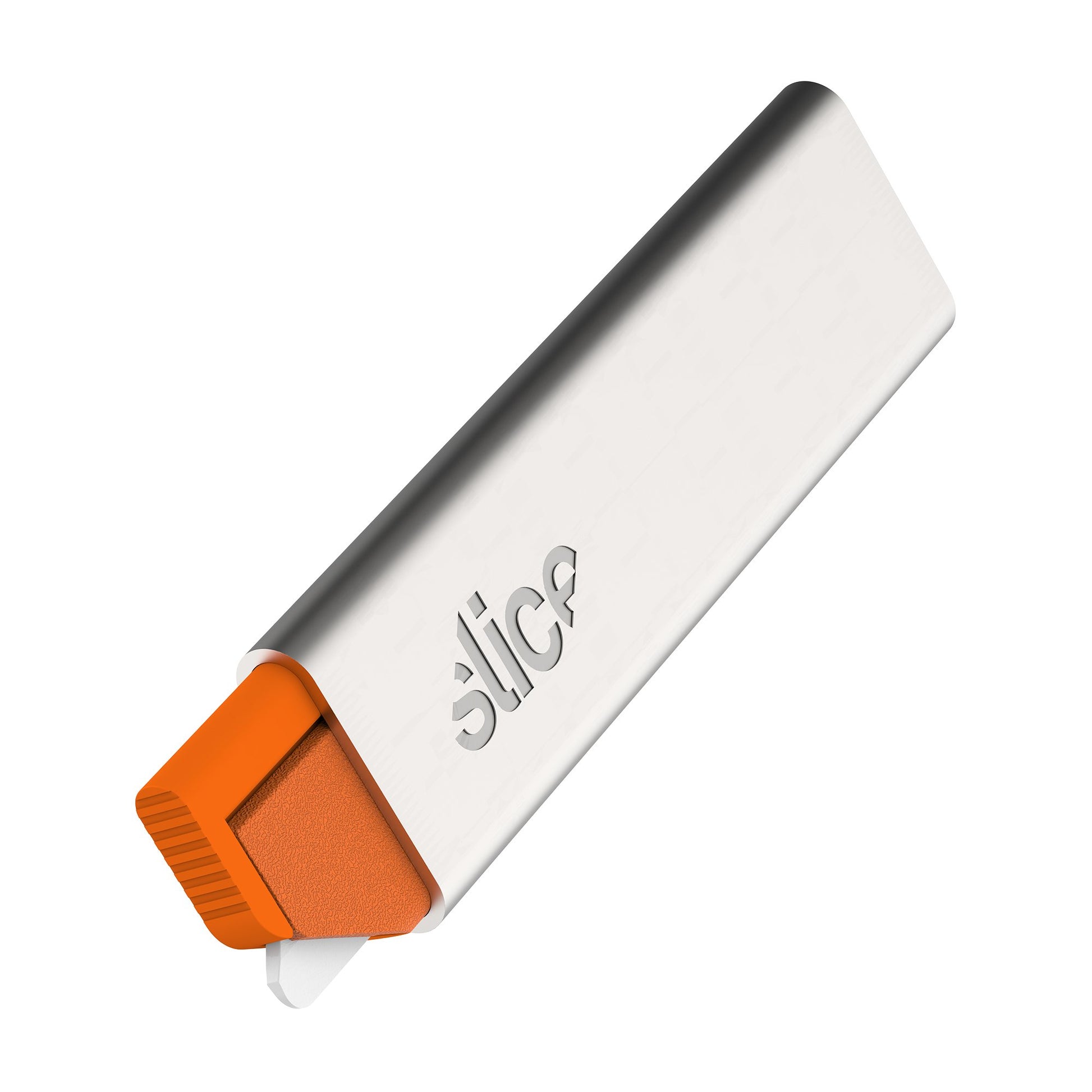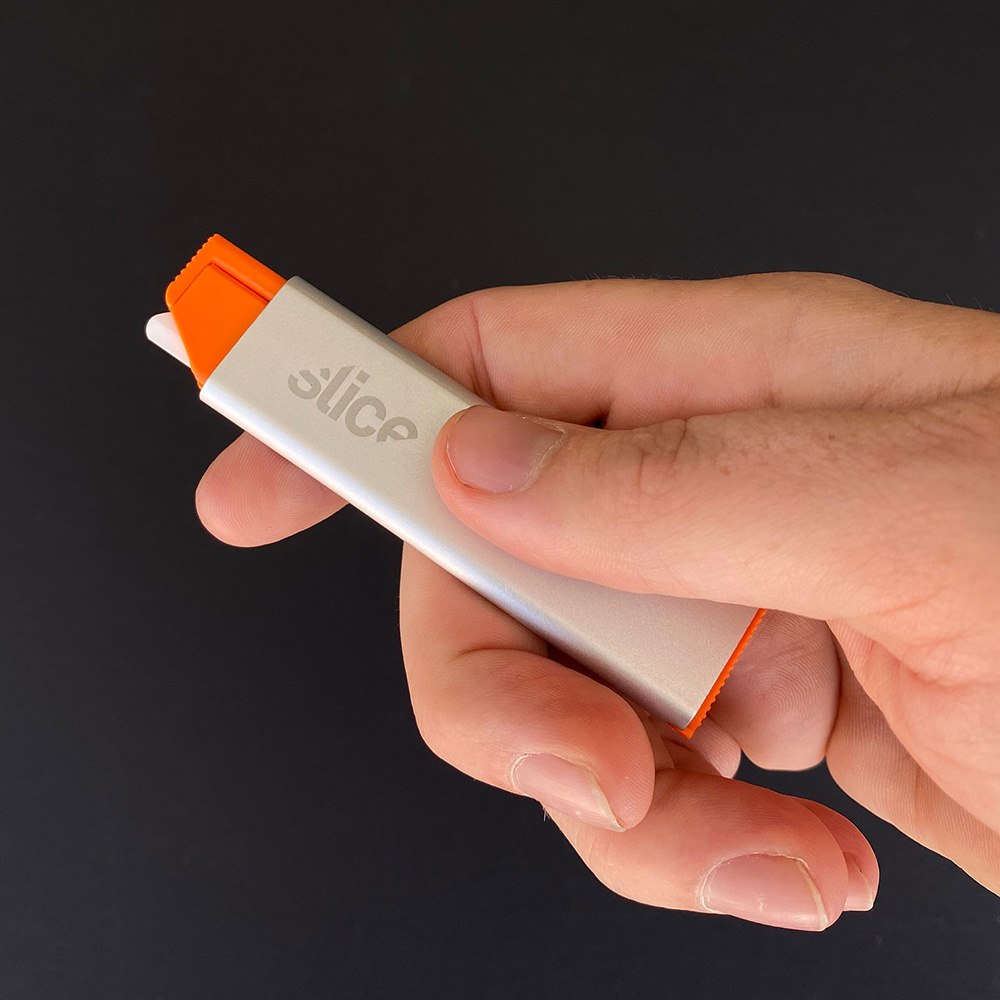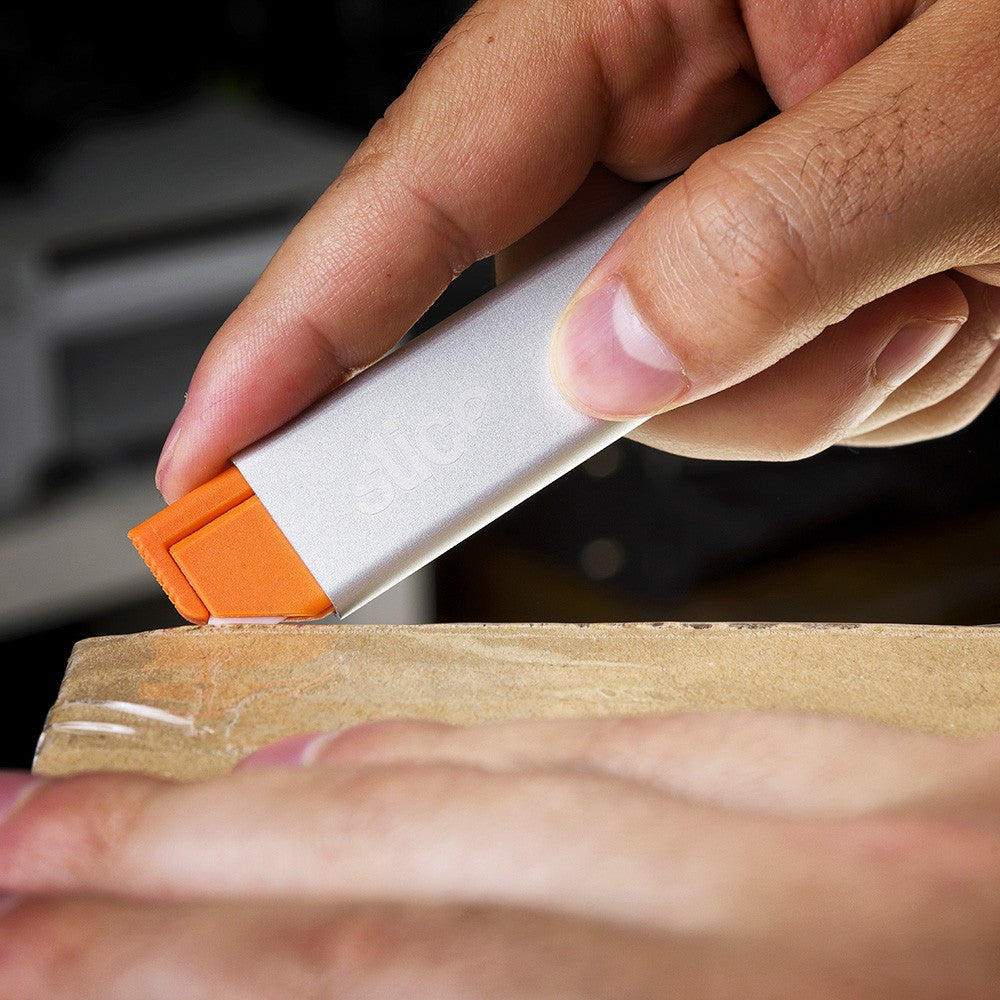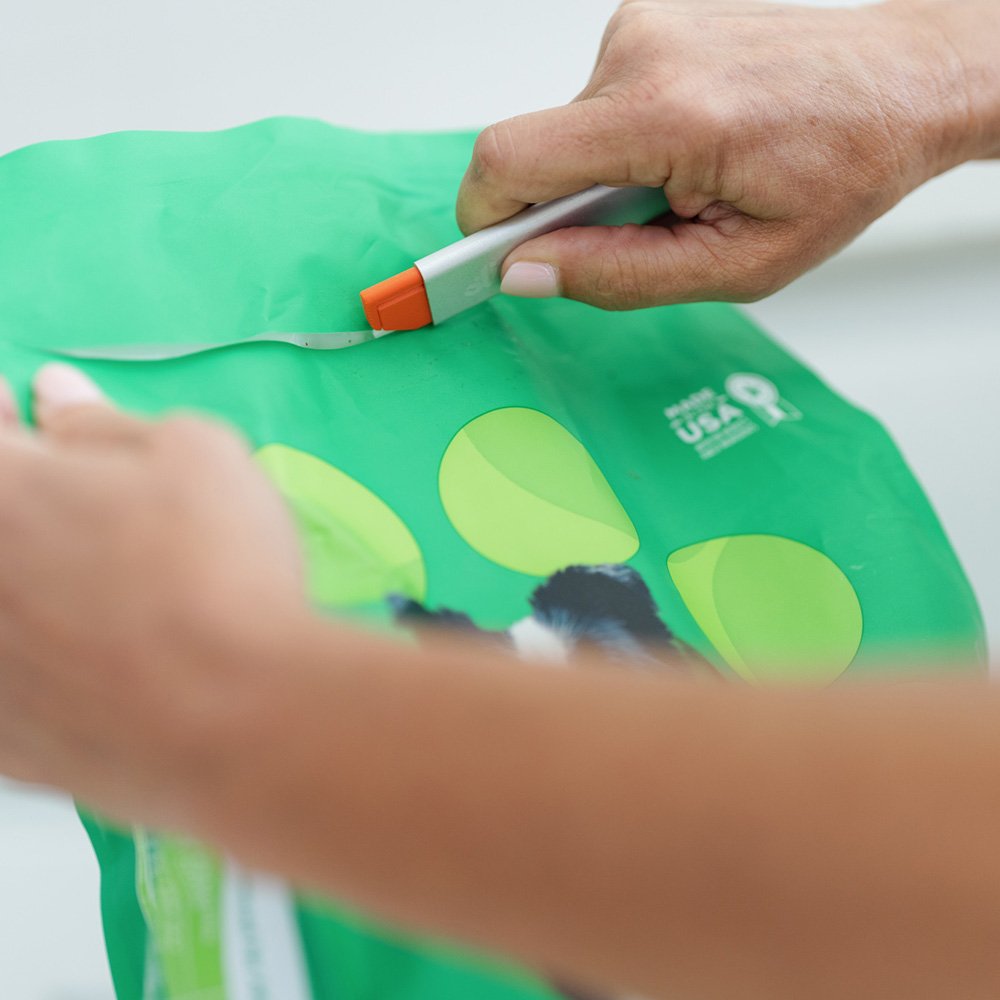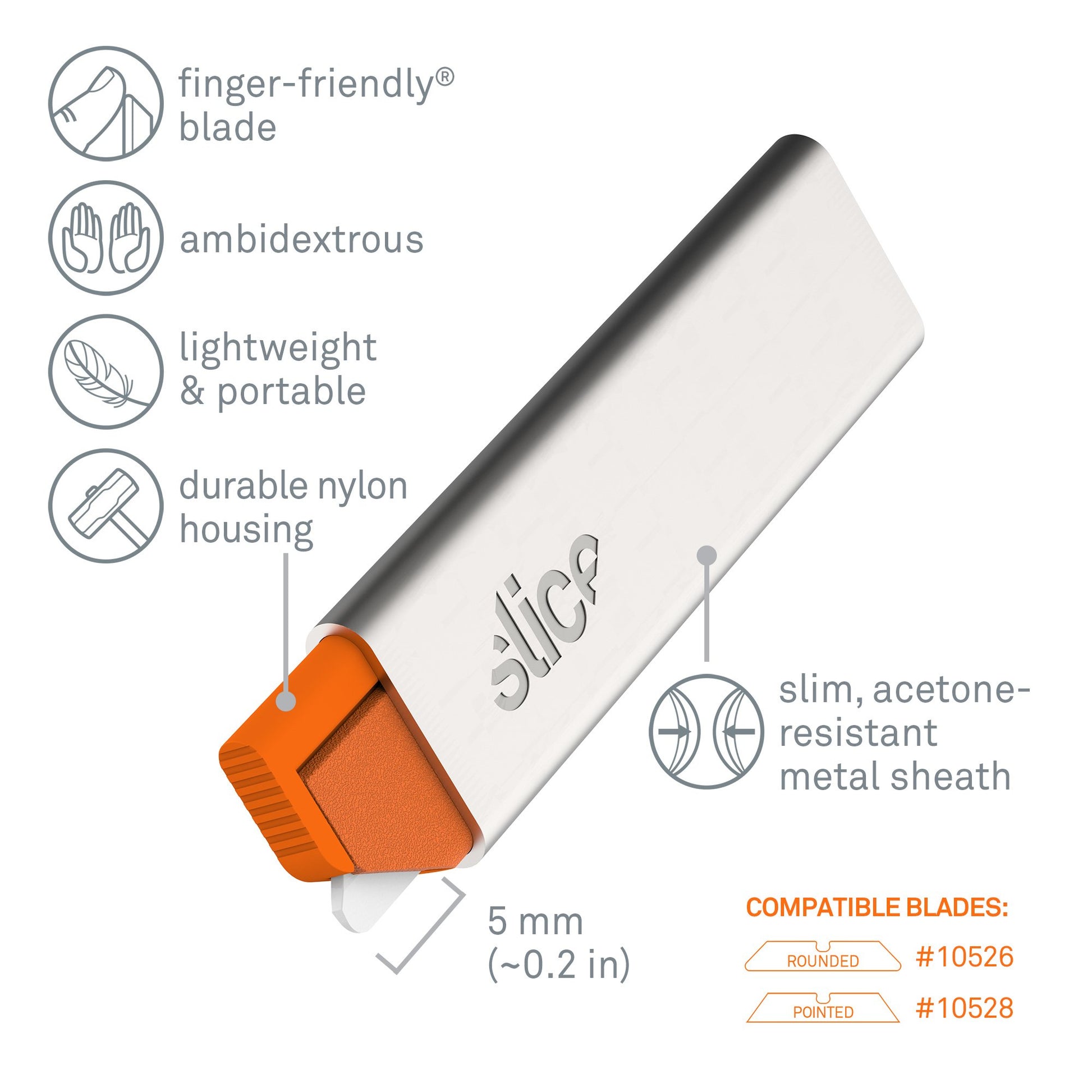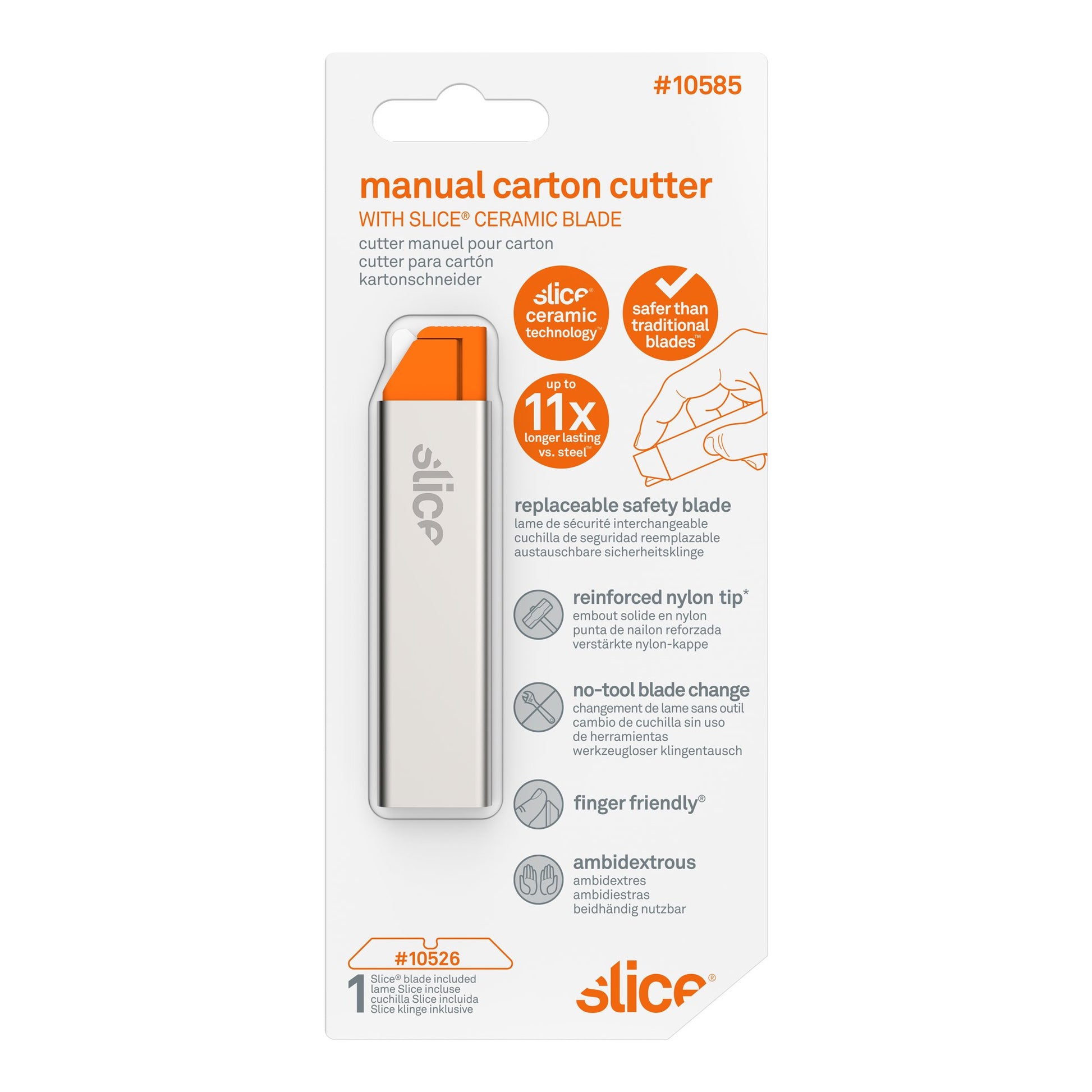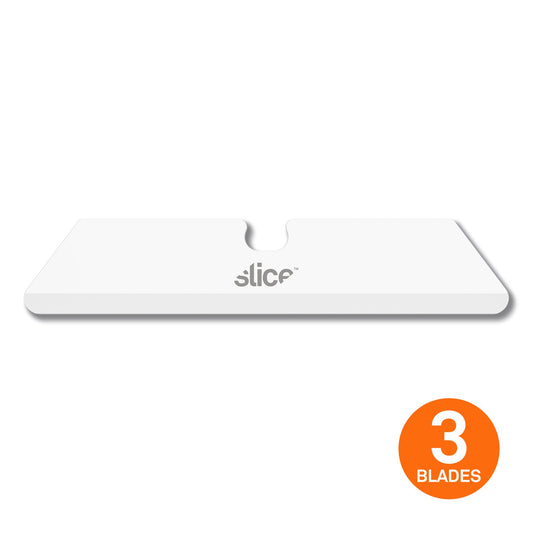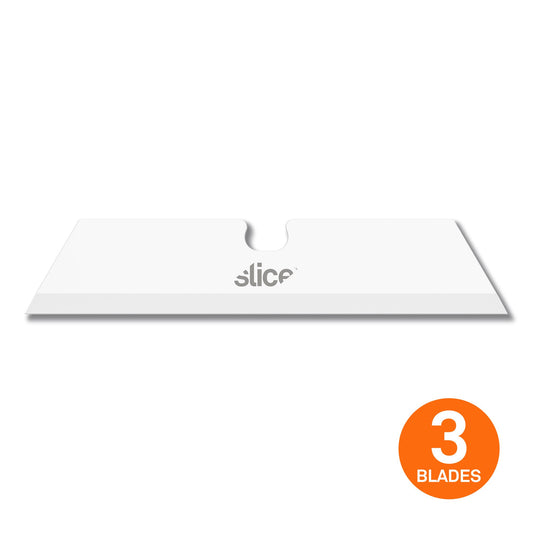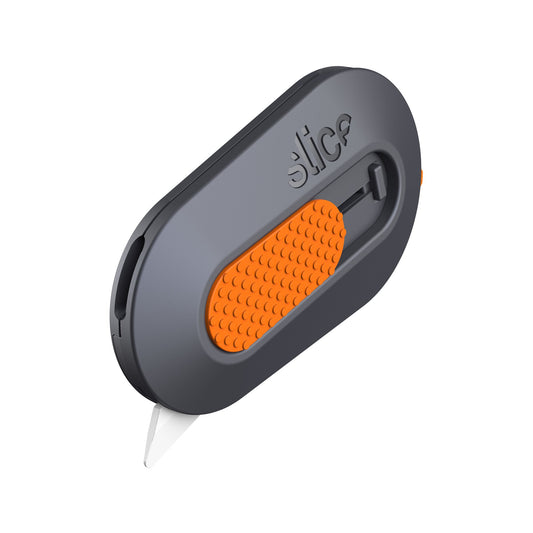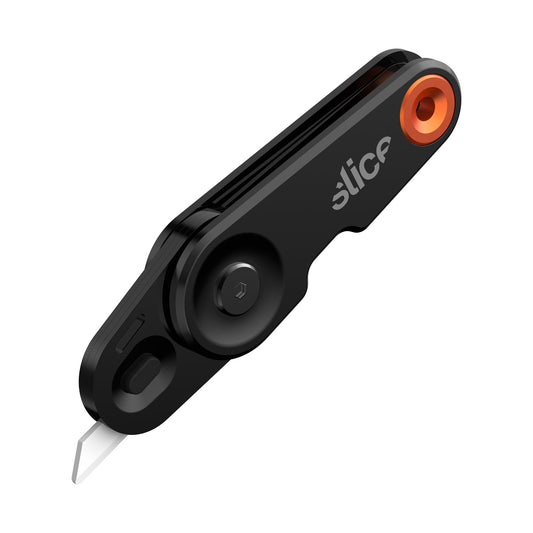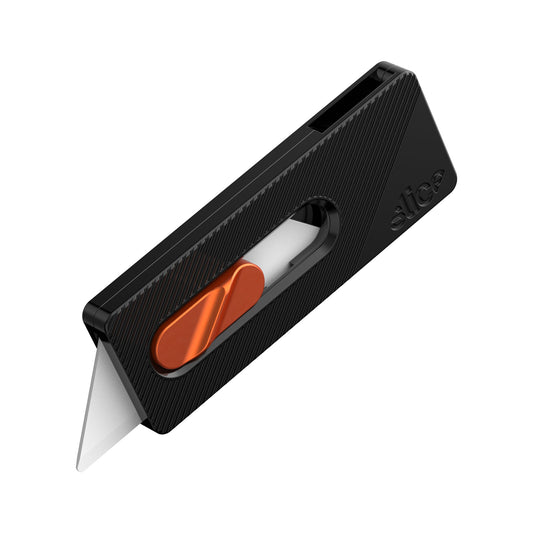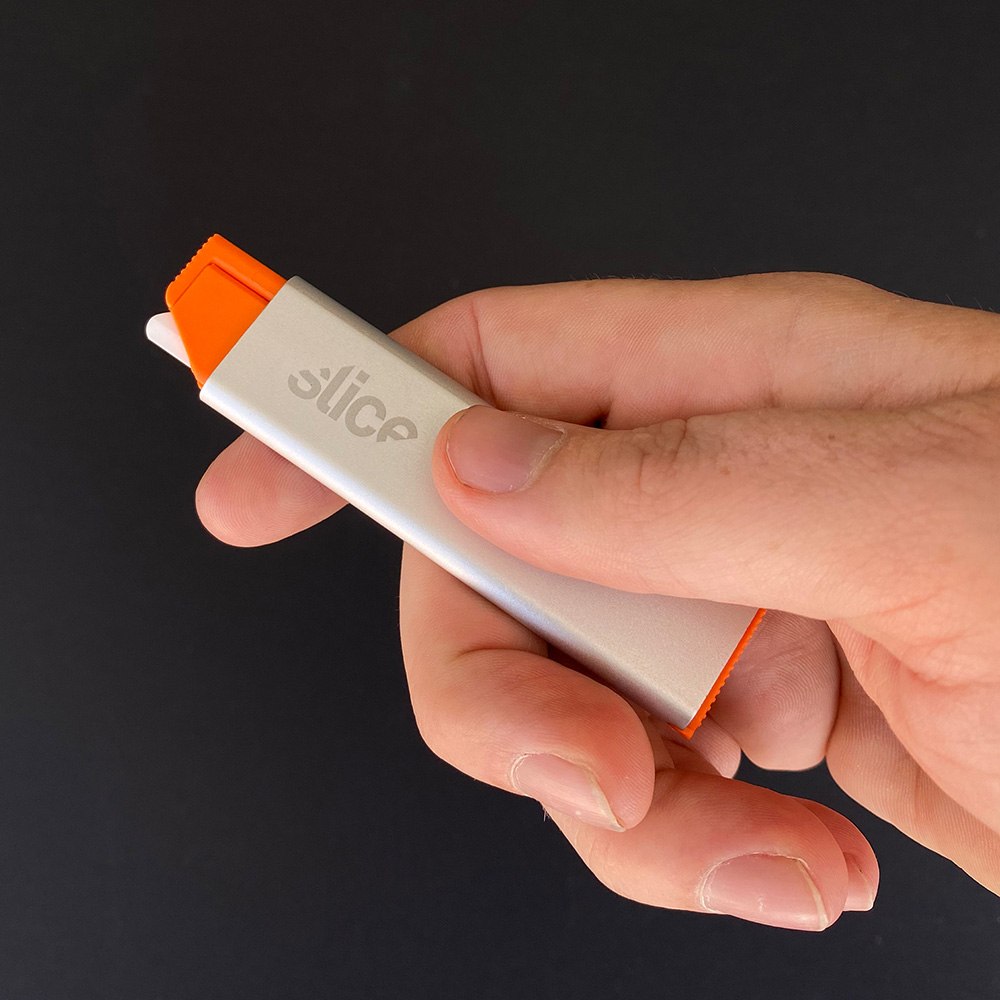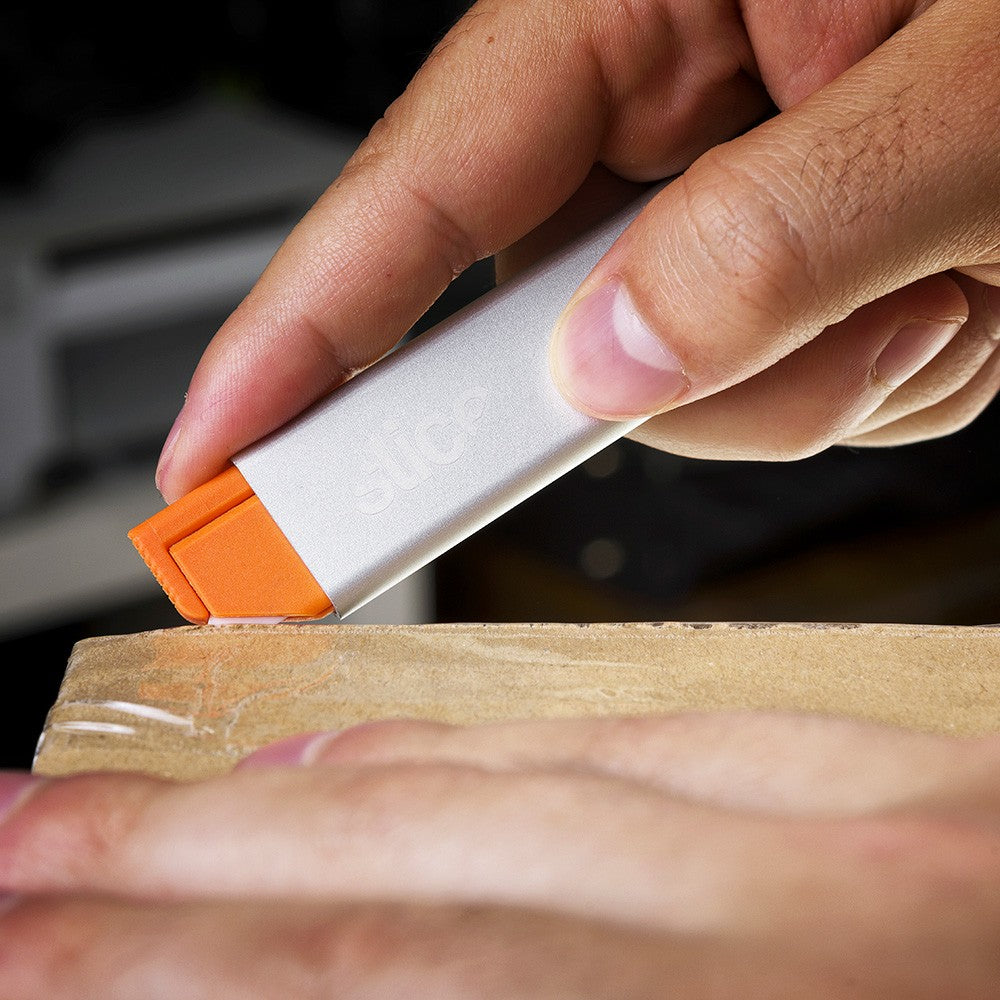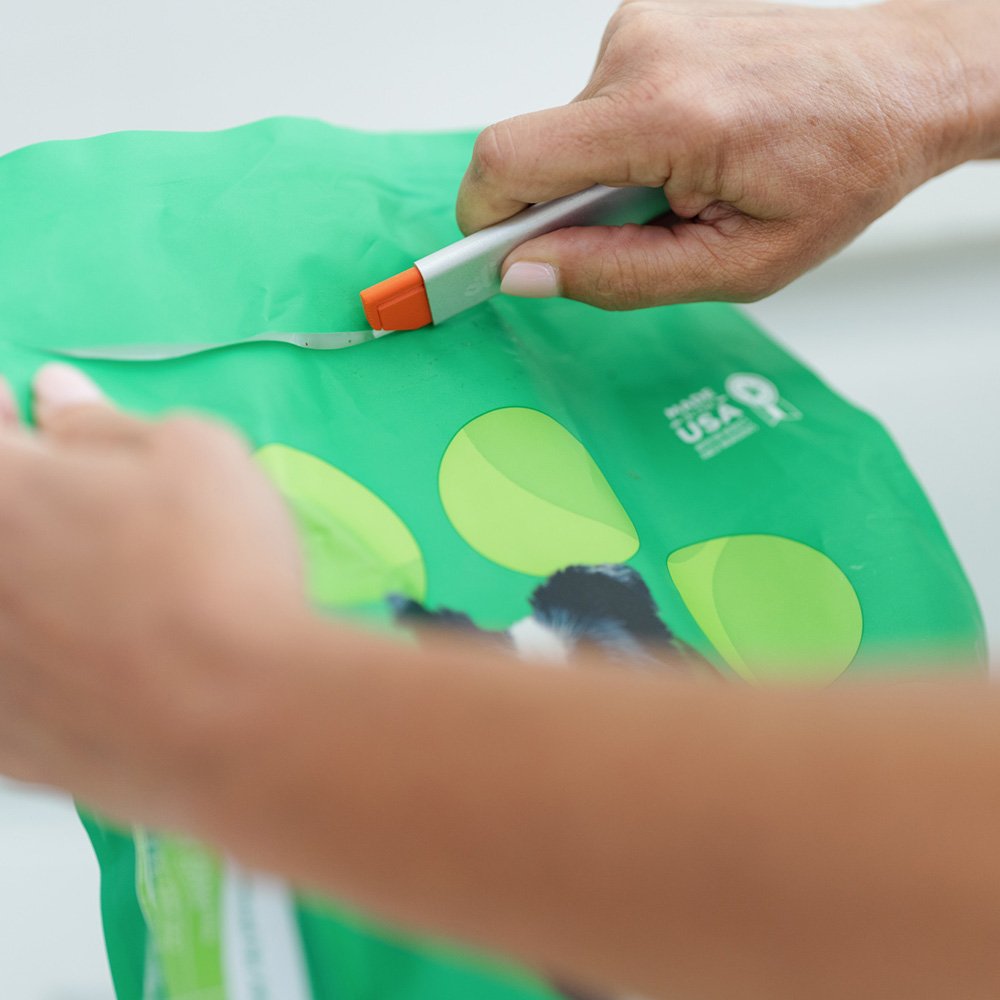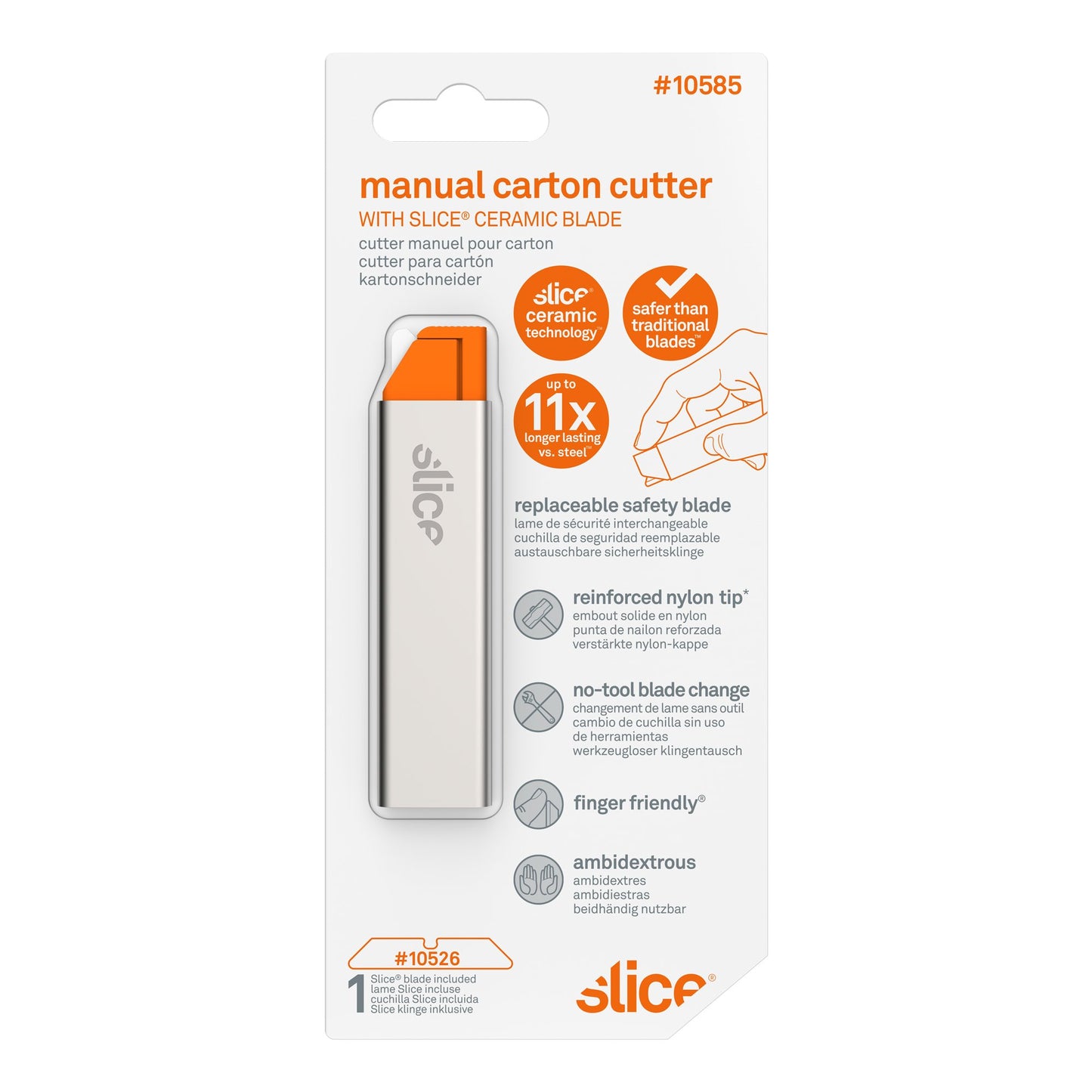수동식 판지 커터
SKU #10585
Slice® 10585 수동식 판지 커터는 저희 안전칼 라인에 새로이 추가된 칼입니다. 이름이 말해주듯 이 공구의 디자인—노출된 칼의 길이와 각도—은 골판지나 얇은 코룰게이트에 안성맞춤입니다. Slice 판지 커터 (수동)은 포장 내용물에 손상 입힐 걱정 없이 쉽게 골판지를 자를 수 있는 길이 만큼만 날이 노출되어있습니다. 칼날을 덮거나 드러내기 위해 보호용 금속 칼집을 필요에 따라 사용하세요. 10585는 둥근 칼끝의 10526 유틸리티 칼날과 함께 배송됩니다. Slice의 모든 공구가 그러하듯 이 칼날 역시 저희 Finger-friendly® 기술이 적용되었으며, 화학적 반응을 일으키지 않고, 절대 녹슬지 않으며 유사 금속 제품과 비교해 11배까지 오래 사용할 수 있습니다.
- 설치된 날 유형: 둥근 칼끝
- 항 아세톤의 금속 칼집과 견고한 나일론 핸들
- 양손 모두를 위한 디자인
- Finger-friendly® 날을 통해 효율적으로 커팅
- 부상 및 비용 절감
- 스파킹 비유발, 비전도, 비자성 날
- 화학적 반응을 일으키지 않아 절대 녹슬지 않는 날
- 오일 및 윤활유 미사용 날
- 100% 산화 지르코늄 날
- 금속보다 11배까지 오래 가는 칼날
- 적은 날 교체 = 적은 부상
- 호환되는 칼날: 10526, 10528
- 별다른 공구가 필요 없는 칼날
- SKU #10585
Great for:
- Opening boxes, packaging, and shrink wrap
- Slicing cardstock
- Removing coupons from cereal boxes
Product Specifications
Product Specifications
Cutting Depth:
Material: GFN, aluminum, zirconium oxide
Dimensions: L x W x H
Weight: 0.07 lbWhat Customers Are Saying
-
 I buy these knives for my inspection crew at work. Very durable and cut through cardboard easily. I liked them so much I bought a few for home as well.
I buy these knives for my inspection crew at work. Very durable and cut through cardboard easily. I liked them so much I bought a few for home as well.
Charles Wiggins
-
 This thing is a blast. It’s one of those things that feels good when you use it. It glides through the tape on my packages. I love that sensation. I also use it on my small envelopes, vitamin difficult bottles and large envelope packages.
This thing is a blast. It’s one of those things that feels good when you use it. It glides through the tape on my packages. I love that sensation. I also use it on my small envelopes, vitamin difficult bottles and large envelope packages.
Joan
-
 I love this. It’s small & so easy to use. I can’t believe how well it cuts open packages yet it doesn’t feel sharp to the touch. It’s awesome! I bought several & they make great stocking stuffers.
I love this. It’s small & so easy to use. I can’t believe how well it cuts open packages yet it doesn’t feel sharp to the touch. It’s awesome! I bought several & they make great stocking stuffers.
Sue Messing
Videos
-
Replacing Carton Cutter Blades
Compatible Products
Related Products
FAQ
What Is a Carton Cutter?
Carton is generally considered to be thin (single-walled) corrugated cardboard or non-corrugated cardboard, also known as boxboard. By extension, carton cutters, also known as box cutters, are any tools designed to slice through these materials. When making your selection, keep in mind features that may be a priority in your workplace.
>While many people use utility knives for this purpose and handle designs vary, carton knives typically have a thin, flat rectangular handle with a sheath that slides over the housing to expose or protect the blade. Many use standard metal utility blades while others use (dangerous) snap-off metal blades.These tools are frequently smaller than standard utility cutters and fit easily in the palm of your hand.
>While many people use utility knives for this purpose and handle designs vary, carton knives typically have a thin, flat rectangular handle with a sheath that slides over the housing to expose or protect the blade. Many use standard metal utility blades while others use (dangerous) snap-off metal blades.These tools are frequently smaller than standard utility cutters and fit easily in the palm of your hand.
How Are Slice Carton Cutters Safer?
At Slice® we design everything with safety in mind. This includes handle issues, such as minimizing blade exposure, but also goes much further because: what cuts you, the handle or the blade? All our blades feature our finger-friendly® edge—a safety grind unique to Slice blades. This proprietary double-angle grind cuts through materials effectively but is safe to the touch.
How Do I Change the Blade in the Slice Carton Cutter?
Slice is committed to easy no-tool blade changes and the 10585 is no exception. To change the blade, push the metal sheath into its protective blade-covering position. Then remove the orange housing by pulling it further down until the sheath is completely removed. Open the housing by pulling up the cover along the lengthwise, unhinged edge, just as you would a book. The old blade simply lifts out.
Ensure that the new blade lines up with the notch in the housing and close the housing. Before you slide the metal sheath back on, check for the notch on the bottom of the sheath. Line up the blade with this notch and slide the housing back in. This will ensure that the stopper on the housing lines up with the notch on the sheath, limiting how far down the sheath can slide.
Ensure that the new blade lines up with the notch in the housing and close the housing. Before you slide the metal sheath back on, check for the notch on the bottom of the sheath. Line up the blade with this notch and slide the housing back in. This will ensure that the stopper on the housing lines up with the notch on the sheath, limiting how far down the sheath can slide.

